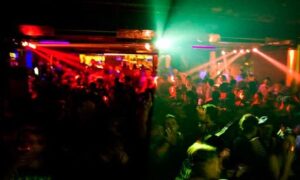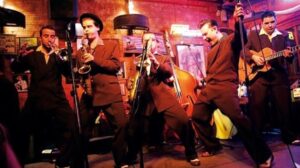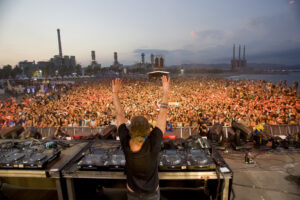La Rambla is a 1.2 kilometer long boulevard in the center of Barcelona, it is the one place that all visitors are bound to pass through on a visit to the city. The middle section of the boulevard is pedestrian-only. Along the route which stretches from the Canaletes fountain to the Columbus Monument there are many historic buildings like the Liceu theatre. The boulevard began as a small river which flowed just outside the city walls. A university and several convents lined the banks of the river. When the city walls were taken down the buildings found themselves lining the dried up river. The boulevard was laid in 1766 and the old buildings were torn down, however each of the 5 sections of the boulevard was named after the buildings which once stood there. Because the boulevard has 5 sections it is often referred to as Las Ramblas.
The sections of Las Rambles include Rambla de Canaletes near the Canaleta fountain; Rambla dels Estudis where the university once stood and today is the site of Reial Academia de Ciences i Arts; Rambla de Sant Josep where a convent once stood and today is the site of the Mercat de la Boqueria and the Joan Miro’s pavement mosaic; Rambla dels Caputxins where a Cupuchin monastery once stood and today is the site of Placa Reial a small square with street lamps designed by Gaudi; Rambla de Santa Monica where a former convent stood leads to the Columbus Monument and Rambla de Mar which takes you down to the seafront.
In a city where the streets are rather narrow this one is wide. The boulevard soon became a popular hang-out and place to see and be seen. The landmark buildings along La Rambla include the Palau de la Virreina and the Boqueria Market. You’ll find many tourist attractions along Rambla like the Wax Museum and Erotica Museum as well as street performers, artists selling their paintings and souvenir stores.
La Rambla is part of the Barcelona Hop-on Hop Off Tour: East to West Route. This tour is an extremely convenient way to get to know Barcelona.







